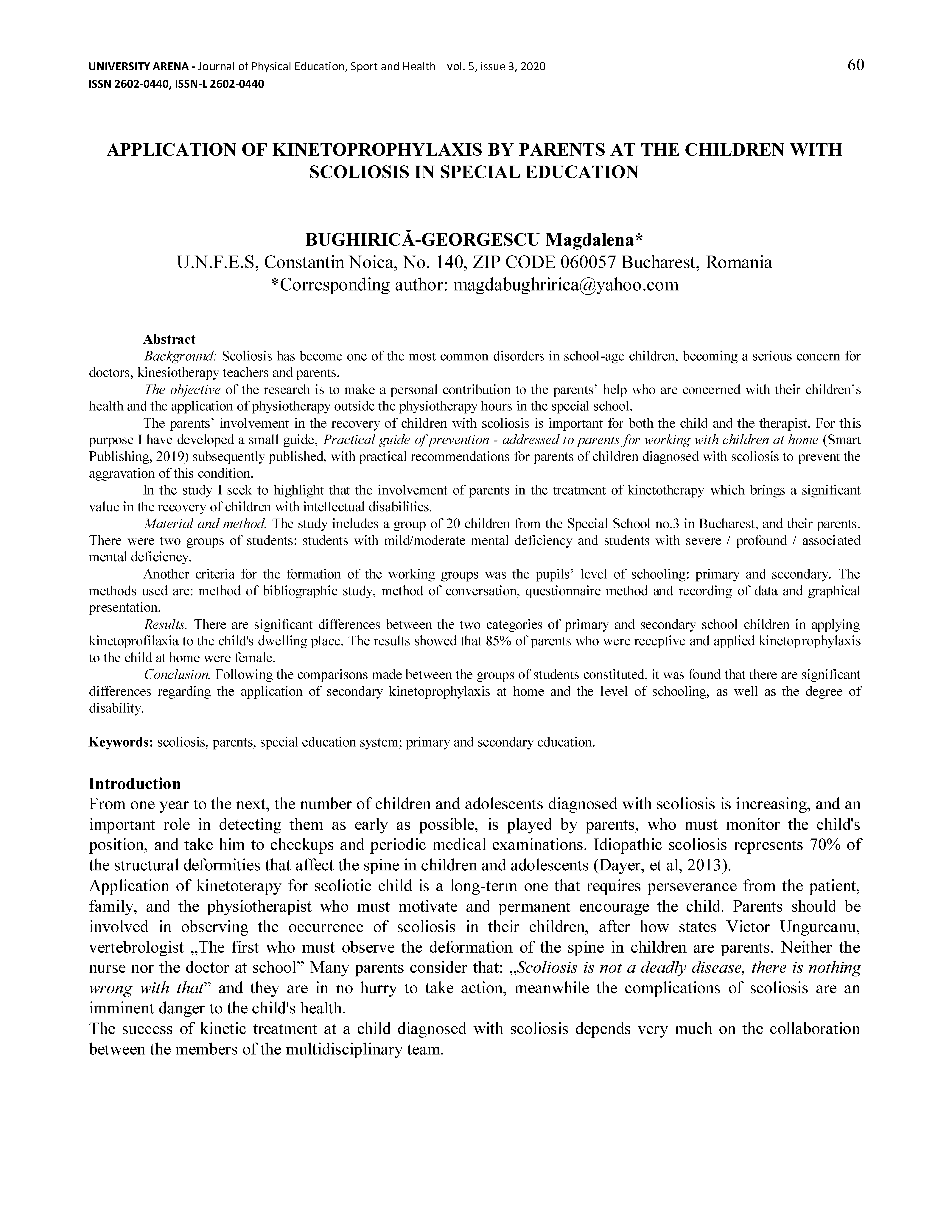APPLICATION OF KINETOPROPHYLAXIS BY PARENTS AT THE CHILDREN WITH SCOLIOSIS IN SPECIAL EDUCATION
DOI:
https://doi.org/10.62229/UaV_3_20-9Keywords:
scoliosis, parents, special education system, primary and secondary educationAbstract
Background: Scoliosis has become one of the most common disorders in school-age children, becoming a serious concern for
doctors, kinesiotherapy teachers and parents.
The objective of the research is to make a personal contribution to the parents’ help who are concerned with their children’s
health and the application of physiotherapy outside the physiotherapy hours in the special school.
The parents’ involvement in the recovery of children with scoliosis is important for both the child and the therapist. For th is
purpose I have developed a small guide‚ Practical guide of prevention - addressed to parents for working with children at home (Smart Publishing, 2019) subsequently published, with practical recommendations for parents of children diagnosed with scoliosis to prevent the aggravation of this condition.
In the study I seek to highlight that the involvement of parents in the treatment of kinetotherapy which brings a significant
value in the recovery of children with intellectual disabilities.
Material and method. The study includes a group of 20 children from the Special School no.3 in Bucharest, and their parents.
There were two groups of students: students with mild/moderate mental deficiency and students with severe / profound / associated mental deficiency.
Another criteria for the formation of the working groups was the pupils’ level of schooling: primary and secondary. The
methods used are: method of bibliographic study, method of conversation, questionnaire method and recording of data and graphical presentation.
Results. There are significant differences between the two categories of primary and secondary school children in applying
kinetoprofilaxia to the child's dwelling place. The results showed that 85% of parents who were receptive and applied kinetoprophylaxis to the child at home were female.
Conclusion. Following the comparisons made between the groups of students constituted, it was found that there are significant
differences regarding the application of secondary kinetoprophylaxis at home and the level of schooling, as well as the degree of
disability.

